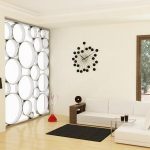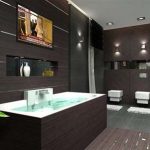In today’s fast-paced world, technology is influencing every aspect of our lives, including design. From the way we communicate to the products we use, technology has reshaped modern design in countless ways. With the rise of digital tools and platforms, designers now have access to a wealth of resources that were previously unavailable. This has not only revolutionized the design process but has also opened up new possibilities for creativity and innovation.
One of the most significant ways technology is shaping modern design is through the use of computer-aided design (CAD) software. CAD software allows designers to create intricate 3D models and prototypes with greater precision and ease. This has drastically reduced the time and costs associated with traditional design methods, making it possible for designers to bring their ideas to life faster and more efficiently.
Additionally, technology has also enabled designers to collaborate and communicate with clients and colleagues in real-time, regardless of their geographic location. With the use of online project management tools and video conferencing platforms, designers can now work seamlessly with others, no matter where they are in the world. This has not only streamlined the design process but has also facilitated greater creativity and collaboration.
Another way technology is shaping modern design is through the use of augmented reality (AR) and virtual reality (VR). AR and VR technologies allow designers to create immersive and interactive experiences for users, whether it’s through a virtual showroom or a 3D visualization of a product. This has revolutionized the way designers present their work and has provided users with a more engaging and personalized experience.
Furthermore, advancements in materials science and manufacturing technology have also had a profound impact on modern design. With the development of new materials and techniques, designers now have the ability to create products that were once thought to be impossible. From 3D printing to sustainable materials, technology has opened up new possibilities for design that were previously unimaginable.
Overall, technology has fundamentally changed the way we approach design. It has enabled designers to work more efficiently, collaborate more effectively, and create products that push the boundaries of creativity and innovation. As technology continues to evolve, the future of design looks brighter than ever, with endless possibilities waiting to be explored.
 decorafit.com Design ideas for your home and patio
decorafit.com Design ideas for your home and patio
















